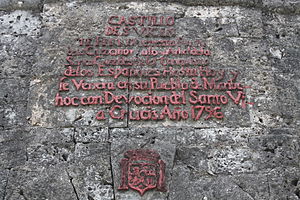
Bohol, officially the Province of Bohol, is an island province of the Philippines located in the Central Visayas region, consisting of the island itself and 75 minor surrounding islands. Its capital is Tagbilaran, the largest city of the province. With a land area of 4,821 km2 (1,861 sq mi) and a coastline 261 km (162 mi) long, Bohol is the tenth largest island of the Philippines.
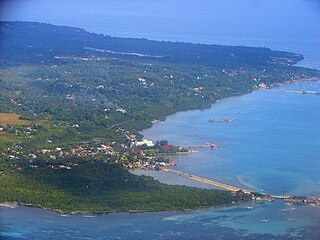
Dauis, officially the Municipality of Dauis, is a 4th class municipality in the province of Bohol, Philippines. According to the 2020 census, it has a population of 52,492 people. The town has many fine beaches, resorts, and a historic church, built in the 17th century. The Hinagdanan Cave is also a draw for tourists.

Loon, officially the Municipality of Loon, is a 2nd class municipality in the province of Bohol, Philippines which was established in 1753. According to the 2020 census, it has a population of 44,224 people.
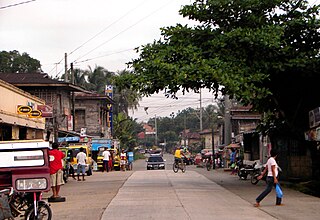
Maribojoc, officially the Municipality of Maribojoc, is a 4th class municipality in the province of Bohol, Philippines. According to the 2020 census, it has a population of 22,178 people.
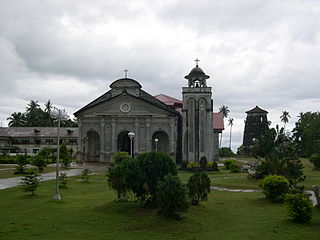
Panglao, officially the Municipality of Panglao, is a 4th class municipality in the province of Bohol, Philippines. According to the 2020 census, it has a population of 39,839 people.
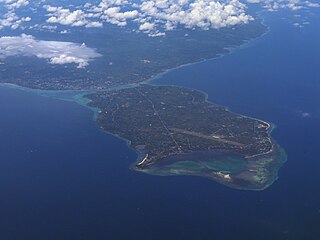
Panglao is an island in the north Bohol Sea, located in the Central Visayas region of the Visayas island group, in the south-central Philippines.

The Spanish fortifications of the Philippines, or fuerzas, are strongholds constructed by Filipinos and Spaniards primarily for protection against local and foreign aggressors during the Spanish colonial period, and during the subsequent American and Japanese occupations. Structures built included fortresses, watchtowers, and bastions. Many are badly damaged, either due to old age or past conflicts. Currently, there are initiatives for restorations of all forts, beginning when the Baluarte Luna of La Union and the Intramuros of Manila were restored in the 2010s. In 2013, a typhoon and earthquake hit Central Visayas and damaged numerous Spanish fortifications, leading to the largest restoration activity for fortifications in Philippine history.

The 2013 Bohol earthquake occurred on October 15 at in Bohol, an island province located in Central Visayas, Philippines. The magnitude of the earthquake was recorded at 7.2, with epicenter 6 kilometres (3.7 mi) S 24° W of Sagbayan, and its depth of focus was 12 kilometres (7.5 mi). It affected the whole Central Visayas region, particularly Bohol and Cebu. The earthquake was felt in the whole Visayas area and as far as Masbate island in the north and Cotabato provinces in southern Mindanao.

Pamilacan is an island barangay in the Philippines, situated 12.5 kilometres (7.8 mi) south of Bohol island and surrounded by the Bohol Sea. It is one of the 17 barangays that compose the municipality of Baclayon. According to the 2015 census, it has a population of 1,418, comprising about 240 families whose main livelihoods now concentrate on dolphin- and whale-watching tours and subsistence fishing, but in the past also included whale, dolphin and manta ray hunting.

Santo Tomás de Villanueva Parish Church, commonly known as Miagao Church, is a Roman Catholic church located in Miagao, Iloilo, Philippines. It is under the jurisdiction of the Archdiocese of Jaro. The church was declared as a UNESCO World Heritage Site on December 11, 1993, together with San Agustin Church in Manila; Nuestra Señora de la Asuncion Church in Santa Maria, Ilocos Sur; and San Agustin Church in Paoay, Ilocos Norte under the collective title Baroque Churches of the Philippines, a collection of four Baroque Spanish-era churches.

Santa Cruz Parish Church, also known as Holy Cross Parish Church and Maribojoc Church, is a Roman Catholic parish church in the municipality of Maribojoc, Bohol, Philippines, under the Diocese of Tagbilaran. The parish was first established by the Jesuits in 1767 or 1768 with Father Juan Soriano, SJ as its first parish priest. The Augustinian Recollects later administered the community until 1898.

Saint Matthias Parish Church, commonly known as Tumauini Church, is a Roman Catholic church in the municipality of Tumauini, Isabela, Philippines, within the jurisdiction of the Diocese of Ilagan. It became a separate parish independent from Cabagan under the advocacy of Saint Matthias in 1751.

Immaculate Conception Parish Church, also known as La Purisima Concepcion de la Virgen Maria Parish Church and Baclayon Church, is a Roman Catholic church in the municipality of Baclayon, Bohol, Philippines within the jurisdiction of the Diocese of Tagbilaran. Baclayon was founded by the Jesuit priest Juan de Torres and Gabriel Sánchez in 1596, and became the oldest Christian settlement in Bohol. It was elevated as a parish in 1717 and the present coral stone church was completed in 1727. The Augustinian Recollects succeeded the Jesuits in 1768 and heavily renovated the church since then.

San Pedro Apostol Parish Church, commonly known as Loboc Church and alternatively as the Diocesan Shrine of Our Lady of Guadalupe in Extremadura, is a Roman Catholic church in the municipality of Loboc, Bohol, Philippines, within the jurisdiction of the Diocese of Tagbilaran.

The Nuestra Señora de la Luz Parish Church, also known as Our Lady of Light Parish Church and commonly as Loon Church, is a Roman Catholic parish church in the municipality of Loon, Bohol, Philippines, under the Diocese of Tagbilaran. The parish was established by the Jesuits in 1753 and the original stone church was built from 1855 to 1864. It was declared as a National Historical Landmark by the National Historical Commission of the Philippines and a National Cultural Treasure by the National Museum of the Philippines.

Santa Monica Parish Church, commonly known as the Alburquerque Church, is a Roman Catholic church in the municipality of Alburquerque, Bohol, Philippines. It is under the jurisdiction of the Diocese of Tagbilaran. The church was declared as an Important Cultural Property by the National Museum of the Philippines in 2013.

San Jose de Ivana Church, also known as Saint Joseph the Worker Parish Church and Ivana Church, is a Roman Catholic church located in Ivana, Batanes, Philippines dedicated to Saint Joseph under the jurisdiction of the Prelature of Batanes. The church was declared a National Historical Landmark by the National Historical Commission of the Philippines in 2008.

Saint Ignatius of Loyola Parish Church, commonly known as Capul Church or Fuerza de Capul, is a Roman Catholic fortress church in the municipality of Capul, Northern Samar, Philippines within the jurisdiction of the Diocese of Catarman. It was first established as a mission station by the Jesuits in 1596 under the advocacy of Saint Ignatius of Loyola.

Bohol's 1st congressional district is one of the three congressional districts of the Philippines in the province of Bohol. It has been represented in the House of Representatives of the Philippines since 1916 and earlier in the Philippine Assembly from 1907 to 1916. The district consists of the provincial capital city of Tagbilaran and adjacent municipalities of Alburquerque, Antequera, Baclayon, Balilihan, Calape, Catigbian, Corella, Cortes, Dauis, Loon, Maribojoc, Panglao, Sikatuna and Tubigon. It is currently represented in the 18th Congress by Edgar Chatto of the National Unity Party (NUP).


